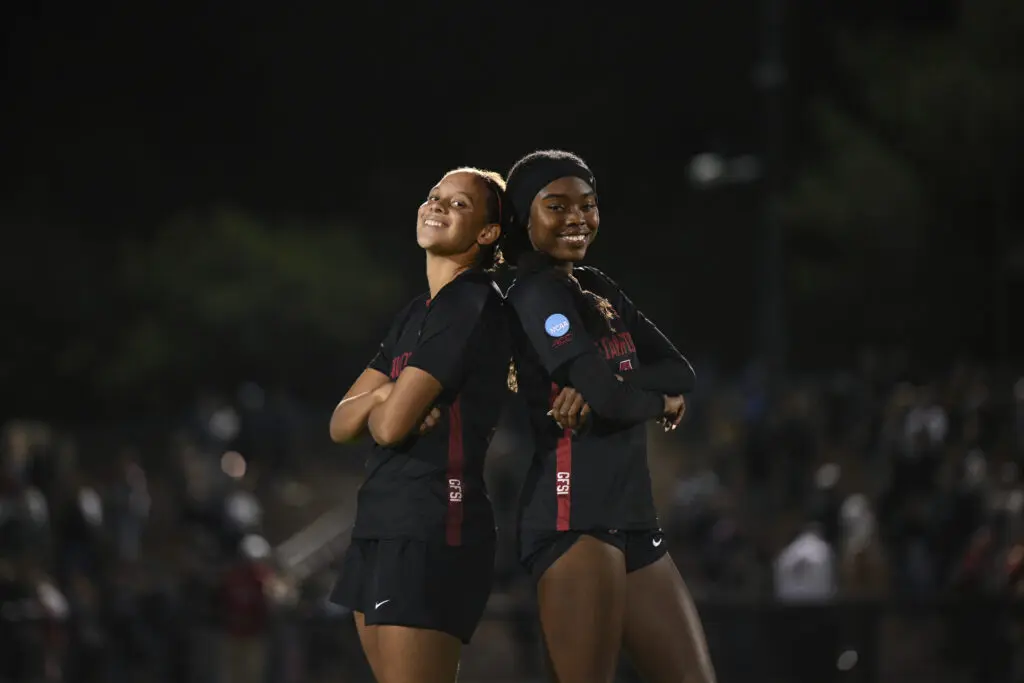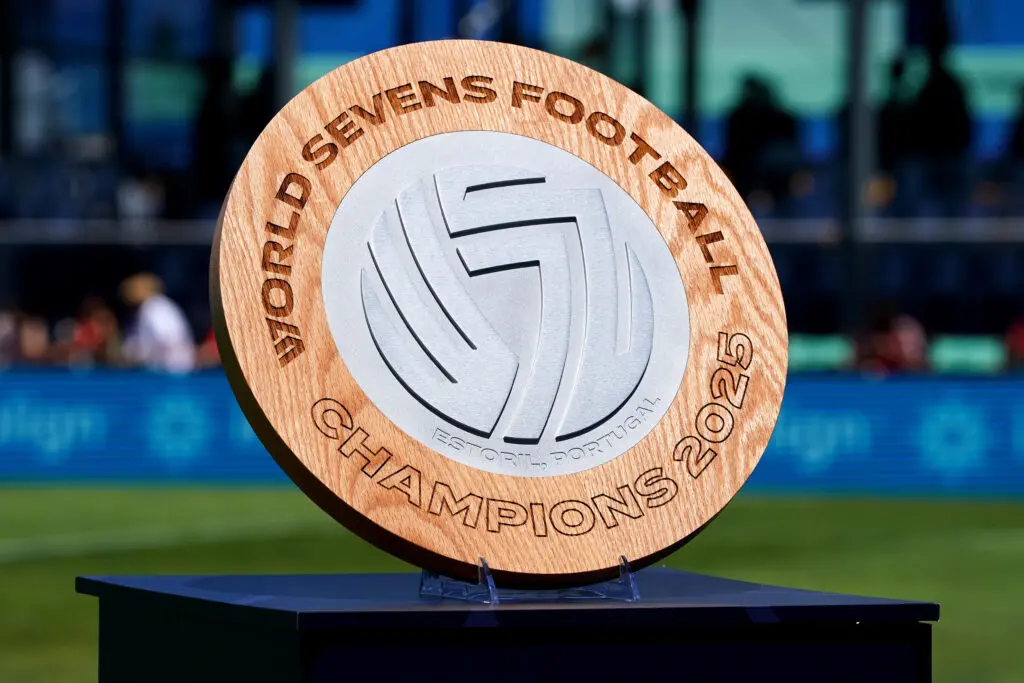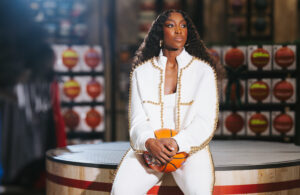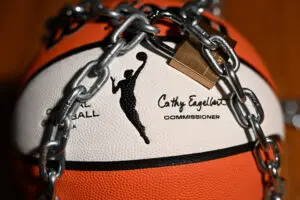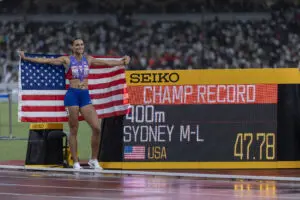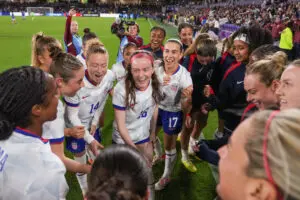The U.S. wrapped up their January game schedule in New Zealand on Friday, kicking off 2023 with two big wins, nine goals scored and none conceded. The trip was as much about getting acclimated to long travel in the World Cup host country as it was about friendly competition, but now that we’re under six months away from the tournament, every game matters.
Here are my three main takeaways from the 4-0 and 5-0 wins, which provided some insight into final roster decisions.
The USWNT’s attacking depth is ridiculous
No matter who is healthy in July, the U.S. is going to have to leave multiple world-class attackers off the World Cup roster due to sheer force of numbers.
Take a look at the list of attacking players who have been in camp in the last calendar year and wonder at the potential: Sophia Smith, Trinity Rodman, Alex Morgan, Catarina Macario, Mallory Swanson, Ashley Hatch, Lynn Williams, Midge Purce, Megan Rapinoe and Alyssa Thompson have all gotten minutes with the U.S. and made an impact. The USWNT took seven forwards to the 2019 World Cup, which puts the numbers at odds with the current player pool before even considering other players who deserve looks, like Christen Press and Mia Fishel.
In New Zealand, the team was without Macario, Rapinoe and Smith and still didn’t miss a beat in the attack. Midge Purce, whom coach Vlatko Andonovski placed on the bubble late in 2022, did everything but get on the scoresheet in the team’s first match. The Gotham FC forward was the biggest bright spot in the USWNT attack during a tepid first half.
If Purce came back with a vengeance, then Trinity Rodman set the whole house on fire. The 20-year-old notched three assists in two games, providing passing outlets and attacking dangerously off the dribble. Rodman has just three USWNT starts in her career thus far, but she looked calm and collected as she collaborated well with the rest of the frontline. Lynn Williams also looked sharp in her first minutes with the U.S. since last February, scoring one goal and notching one assist off the bench in two games.
But perhaps the best example of Andonovski’s looming impossible attacking decisions is Ashley Hatch. Hatch has been in with the U.S. for an extended period of time dating back to December 2021, but she has struggled to get on the field as other players have risen around her. Competing positionally with both Alex Morgan and Catarina Macario, Hatch also doesn’t have the versatility to play both centrally and out wide like a number of her teammates.
And yet, there she was scoring in New Zealand, making the most of the minutes granted to her. Hatch probably still has a steep climb onto the 2023 World Cup roster, but her job is to make the decision as difficult as she possibly can. That level of competition is good for the team at large, with every player making an impact in preparation even if they don’t get the call in July.
The midfield still feels thin
Andonovski made one major positional concession last week when he put Rose Lavelle and Ashley Sanchez on the field together as a No. 8 and a No. 10, superseding the stretched dual No. 10 we saw at times in 2022.
The new spacing allowed Andi Sullivan to play at her best as the team’s defensive midfielder. The Spirit captain moved confidently and passed around New Zealand’s mid-block press. It’s obvious that the team’s Plan A is to rely heavily on Sullivan, and reconfiguring the playmakers around her to provide defensive support and passing lanes paid dividends in the second half of the first match and the entirety of the second.
Plan B in midfield personnel, however, feels as thin as ever. Andonovski started Taylor Kornieck as the No. 6 in the first half of the first match, and the San Diego midfielder didn’t appear ready for the role thrust upon her in her very first USWNT start. Portland Thorns defensive midfielder Sam Coffey didn’t get time in either match, with Kornieck coming off the bench in the second match to close things out.
In general, the midfield roster as constructed feels full of too many specialists, which has resulted in only a few players getting consistent starts. Kornieck is great in the air and has strong passing vision to break lines, but she’s not a No. 6 defensively. Kristie Mewis is another reliable option as a No. 8 off the bench, and Sanchez effectively gives them another creative attacker when she’s on the pitch.
But if the plan is to have Lavelle or Horan play as true No. 8s, the team appears to be relying too heavily on its specialists without giving experience to the players who could become starters with time. Sanchez proved this week that she has a unique skill set worth adjusting for, but other roles remain unclear.
The backline is very attacking-minded
We can attribute some of this to the way the U.S. wanted to play New Zealand, who were missing a number of key players, but the USWNT defense once again shined in attacking possession rather than defensive transition.
Sofia Huerta excelled as an attacking generator in the second match, and what she brings as a crosser will likely cement her place on the 2023 World Cup roster. Crystal Dunn looked her sharpest at left back in the second match, combining in passing triangles that unlocked New Zealand’s defensive formation.
Naomi Girma started both matches and was given the freedom to push forward and find the best passing lanes through New Zealand’s defense. But in the very brief moments the U.S. had to scramble on counterattacks, the defense felt somewhat shaky.
Casey Murphy started the second match in goal. The 26-year-old had one cautious punch off a corner kick turn into a chance opportunity, upon which the USWNT benefitted from a foul call to calm the danger. Murphy has all the tools to be a great international goalkeeper, but even in limited action, her occasional hesitation in goal is obvious enough to set the defense on edge. The U.S. has struggled at times to defend set pieces over the last year, and the communication didn’t always seem crisp last week.
Overall, the team appeared collectively calm, like they had righted some structural imbalances from late in 2022 and were having fun. As the schedule turns to the SheBelieves Cup in February, these games provided several lessons the U.S. will want to carry with them.
Claire Watkins is a Staff Writer at Just Women’s Sports. Follow her on Twitter @ScoutRipley.

